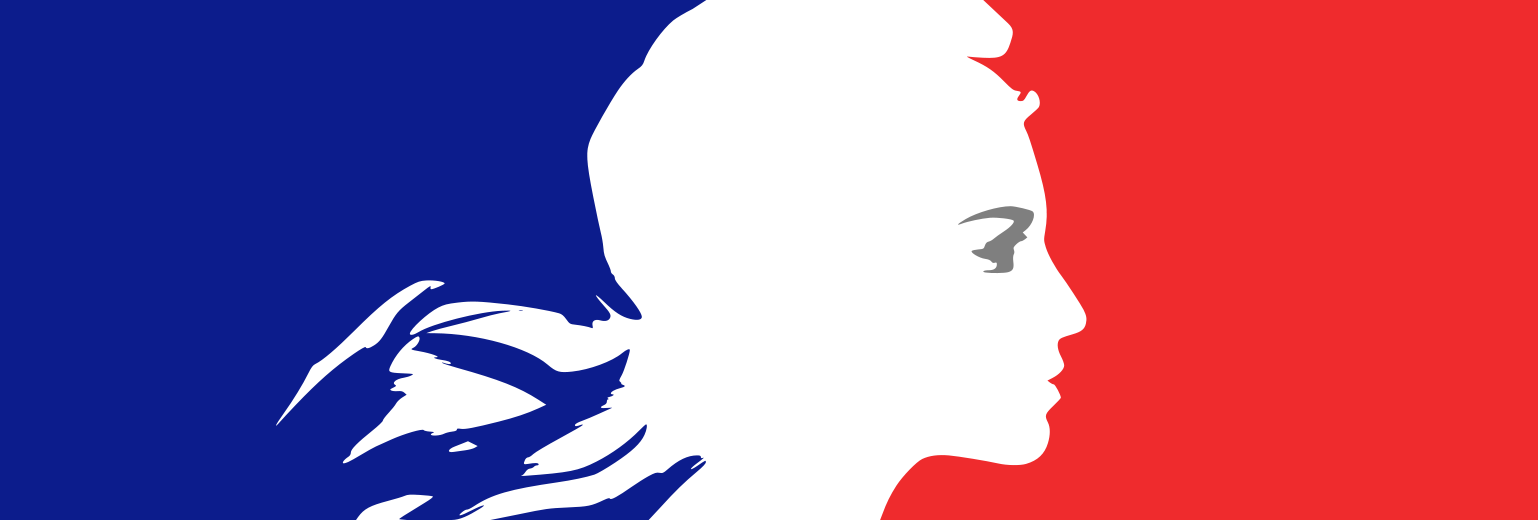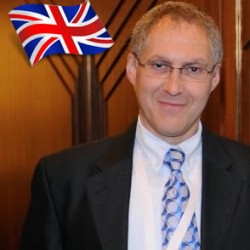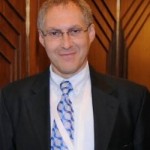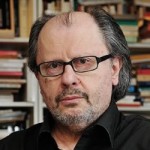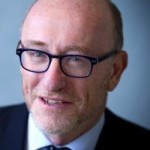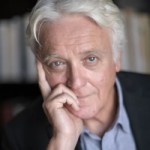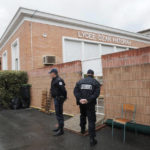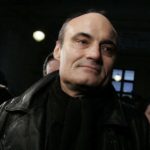Question: You are a researcher at the Representative Council of French Jewish Institutions (CRIF). In January 2013, Editions Berg International Editeurs published your new 350-page work titled Anti-Semitic Hatred and Violence from 2000 to 2013: A Retrospective [Haine et violences antisémites. Une rétrospective 2000-2013]. What did you hope to achieve by making this retrospective?
Marc Knobel. I’m a historian by training. Accordingly, I attach a high level of importance to making sure that facts and events are recorded, written down, recounted, and remembered with the greatest precision and meticulousness. In this regard, I will talk in terms of historic perspective. Moreover, I realized that when we talk about this subject, we forget to mention certain facts, even though they have left their mark on our minds. Much has happened and it is not always possible to remember everything.
Beyond this observation, I asked myself a certain number of questions. In the France of the first decade of the twenty-first century, has hostility against Jews not developed largely among young people from so-called problem neighborhoods who are searching for an identity amid feelings of discrimination and, very often, victimhood? Do these young people not (sometimes) identify with the Palestinians, whom they think they are “avenging” when they act with hostility toward Jews? If this were to be the case, should this behavior not be denounced? What is this logic? Unless it involves a “new look and proletariat descended from integration and indoctrinated with hate against Jews and more broadly the West”, as the philosopher Pierre-André Taguieff supposes? Are these young people not motivated instead by an implacable hatred against Jews that causes them very simply to act with hostility toward Jewish targets such as schools, places of worship, stores, and individuals? Is there not within this anti-Jewish rage ultimately a culture of anti-Semitism?
I also wondered if the Israeli-Palestinian conflict plays a significant role. Furthermore, does this conflict not serve as an alibi for the expression of anti-Semitism in more socially privileged milieus? In other words, is the Israeli-Palestinian conflict not a (false) pretext that has permanently broken the taboo of anti-Semitism? Are Islamists turning underprivileged suburbs into hotbeds for the propagation of heir pseudo-theses? In their preaching or through the Internet, do they present a vision of Islam that is under siege and threatened by the Americans, the Europeans, and the Jews? Would this conspiratorial vision be even more serious if young people were to listen to and read such propaganda regularly and draw nourishment from it, thinking that they found in it an explanation for the disarray, grief, and fear in their lives? Shouldn’t we stop saying, as people sometimes do, that if young people (whether they’ve been converted or not) become Islamic extremists as a result, it is to some degree the fault of a society that did not successfully integrate them or because they’re unemployed and suffer from social exclusion? Are these people “motivated by an ideology and doctrinal hatred of Jews”, as the sociologist Shmuel Trigano has remarked? And is it physical or moral poverty that creates terrorism or indoctrination, obscurantism, and fanaticism? And then, there are the infamous stereotypes. Is the tragic murder of Ilan Halimi the product, the result of a structural anti-Semitism that continues to survive and rely on the same old, nauseating clichés that have lasted throughout the centuries: of course the Jews work in banks, the media, and politics, they have money and power (sic)? So numerous are the generalities that we sometimes read. Also, since 2000, are French Jews in a state of distress? And would they have imagined for a single moment that there would be a price to pay for being Jewish at the beginning of the twenty-first century?
All these questions are important, and I’ll try to answer them.
Question: What are some of the features of this new period in the history of anti-Semitism that your book discusses?
MK. Since the beginning of the Second Intifada in 2000, anti-Jewish violence has erupted in an almost simultaneous manner throughout France and the Western democracies.
-First of all, individuals are animated by more or less vague feelings of hostility to Israel that are exacerbated by media coverage of confrontations in the Middle East. This facilitates their projection of themselves into a conflict that, in their eyes, reproduces the patterns of exclusion and failure of which they feel they are victims in France. As early as 2000, Mehdi Lallaoui, the producer and figure in the militant movement in the suburbs for over thirty years and a figure in the March for Equality organized in 1983, explained it well. He rightly stated, “For me, it’s an identification within a world of images. These young people see very violent confrontations on TV; they feel solidarity with them and by association attack Jewish symbols due to a lack of Israeli targets.” Malek Boutih, the former president of SOS Racisme (1999-2003), made this very interesting observation: “Young people have an unstructured discourse. They slide very quickly from anti-Zionism into anti-Semitism, and from Israel to Jews.” It is thus with lucidity that the organization’s members say again and again that the conflict must not be imported onto French soil and the places of worship of the Jewish community (as well as the Muslim community). must not be targeted. They also issued a warning, because they foresaw that these acts aggression could multiply. Moreover, how does it help the Palestinian cause when common thugs attacks young Jews in France? What support is this giving? Will the Palestinian cause be encouraged and fortified by such actions? Of course not. Let us state it clearly: There is no justification for attacking a kosher store, there is no justification for attacks against Jewish teenagers. Does it need to be said again? So aren’t there other reasons? Isn’t there a culture of anti-Semitism in certain suburbs? Are these young people not motivated instead by an implacable hatred against Jews that causes them very simply to act with hostility toward Jewish targets such as schools, places of worship, stores, and individuals? Are they not also encouraged and/or indoctrinated by Islamist agitators or preachers of hatred? In short, does the conflict explain everything? No. It can explain certain things, but it does not the desire to take it out on French Jews because things are heated in the Middle East.
-Secondly, this form of anti-Semitism had its voice heard on the global stage in August 2001, in Durban, South Africa, during the UN conference against racism, xenophobia, and intolerance. The Israeli-Palestinian conflict, which had nothing to do with it, occupied all the participants. Israel was treated as a pariah among nations, and protesters marched shouting “One Jew, one bullet”, which was based on the “One settler, one bullet” slogan from the apartheid era. In Durban, anti-Semitism was divorced from its racist roots and articulated in the beautiful, crystalline language of anti-racism. “The Jews, those racists” is what is said now.
-Thirdly, it is important to give an overview of the reaction of the Muslim community during this period. We also want to measure at what point and whether or not Muslims were enticed into these acts of violence starting in October 2000. In our work, we mention the discomfort on the part of politicians and the media, for whom the idea of denouncing anti-Semitic acts caused embarrassment on the pretext that some of them could have been committed by Muslims. This raises the question of why we should necessarily keep quiet about the fact that acts of aggression were or allegedly were committed by young Arabs and Muslims? Would it be politically incorrect to say so? As for what concerns us, we believe that when an individual acts in the name of a religion, identity, or ideology to cause harm to an individual due to his or her religion, identity, or ideology, the public must be informed of it. But we are careful to avoid any conflation. It would indeed be unjust and especially shocking to assign to the entire French Arab and Muslim community the violence committed by a few individuals. Every group has its black sheep; this cannot be said frequently enough. They must therefore be denounced. But we cannot, we must not conflate them with Islam. We cannot stress this point enough.
This being said, what’s happening? We cannot reproach Muslims for supporting the Palestinian cause. Everyone is free to express his or her point of view and support a cause and affirm solidarity with it. The same is true for Jews who support Israel. However, there is a risk when one goes beyond the bounds of democratic debate and allows oneself to be attracted, fascinated, or even subjugated by inflammatory speeches or preaching that rage against Israel – or, conversely, against Palestinians. It is through listening, reading, or paying attention to a few preachers (of hatred) that one runs the risk of being drawn into a spiral. It will of necessity be painful. And yet, some Muslims react when the Israeli-Palestinian conflict is mentioned with much more interest than they express toward other conflicts, such as Iraq, Chechnya, Kashmir, Bosnia, and Western Sahara and the Polisario Front. But isn’t this focus excessive? Through reading, listening, and ultimately endlessly repeating that the Israelis behave like monsters, and through, conversely, the idealization of the Palestinian cause, which has been made into a new people’s struggle, some weaker minds act with hostility toward the Jews when there are no Israelis around. These unfortunate targets are conflated with Israelis, that is to say, with the oppressors. To “avenge” their Palestinian brothers, they strike out at Jews. However, this explanation does not seem sufficient to us. We will express a few other hypotheses. They also make it possible for us to understand why things have turned so ugly since 2000 and what the other (potential) motives of the aggressors are.
-Fourthly, in one sense, the aggressors believe the Jews are protected, they imagine that they’re all rich and powerful. The old stereotypes are there. The tragic murder of Ilan Halimi is indeed the result of a structural anti-Semitism that continues to survive and rely on the same old, nauseating clichés that have lasted throughout the centuries: of course the Jews work in banks, the media, and politics, they have money and power (sic) – as if no Jew was ever in need, much less poor, or an artisan or shopkeeper. These are the racist stereotypes, which were peddled by petty hoodlums and thugs in benefits, that would provoke the death of Ilan Halimi.
-Fifthly, Islamists cultivate the suburbs, they know how to point out the enemy or enemies (such as the Jews or France). For them, Jews and, to a lesser degree, Christians, rejected the Prophet and Islam. In their sermons or online, they thus present a conspiratorial vision of Islam that is supposed to be under siege and threatened by the Americans, the Europeans, and the Jews. They are certainly a minority (a few thousand at most), but they have increasing influence. Small Islamist groups (such as the Salafists) have launched the offensive against French Muslims. They are often violent and anti-Semitic and expect everyone to accept their views on Islam. In fact, those who lead the fight against terrorism believe that it is from their ranks that future generations of radical activists will come.
Accordingly, starting in 2002, in response to the considerable growth of this radical type of Islam, the public authorities decided to strengthen their vigilance with regard to foreign preachers. Corrective measures were taken and were often covered in the media in order to punish speech that incite violence, jihad, anti-Semitism, and racism. And yet, it was very quickly realized that the Internet has become the Islamic extremists’ new preferred method of spreading propaganda. Thus it was that by the end of 2004, fifteen French-language sites were being monitored by police officers. Just as with videocassettes, the Internet made it also made it possible for Salafists from various regions to form ties between themselves. Remember that, starting in the late 1990s, considerable resources were marshaled to fight against the Islamist cells implanted on French soil that were likely to perpetrate new terrorist acts in France or to strike against French interests abroad in the future. Take as an example the Islamist network called the filières tchétchènes [Chechen connection], which, you will recall, prepared all sorts of terrorist acts in 2001 and 2002 against tourist targets such as the Forum des Halles or the Eiffel Tower. If these attacks had taken place, they probably would have caused numerous deaths and injuries, just like the double attack on the Galeries Lafayette and the Printemps store on Boulevard Haussmann on December 7, 1985 (43 injured), the explosion of the FNAC Sport in the Forum des Halles on February 5, 1986, in which 22 people were injured. Or the attack on September 17, 1986 in front of the Tati store on the Rue de Rennes in the 6th arrondissement, which caused seven deaths and 55 injuries. The targets of the terrorists were easily identified, had high symbolic value, and were particularly vulnerable. In the first years of the twenty-first century, political and institutional leaders realized that France would not be spared and that one day, terrorists would strike the capital once again. It wouldn’t be the same terrorists, as the context would be different and the motives would not necessarily be the same.
The intelligence and police services thus began to monitor certain individuals, for example, people who frequently traveled to Iraq, Afghanistan, or Pakistan. Reliable information on their activities, their family, and their associates was also made available. Some mosques received especially close attention, as did websites that defended Jihad and indoctrinated young people. The services infiltrated networks, and thus acquired a solid reputation in the field and prevented the execution of terrorist acts in our cities. The Salafists at the time were foreigners who had moved to France, to certain housing projects. It was from here that they began to indoctrinate young people who were cut off from society, had no future, and often had police records. These petty delinquents or traffickers organized and infiltrated their territory: apartment buildings, a parking lot, basements or staircases. Kids took part as lookouts in the selling of drugs. The police monitored them but they were also interested in the Salafists, who were drawn by the opportunity to use these kids with no direction in life by converting them to a political and religious ideology. Thus it was that they turned from delinquents into jihadists and turned their backs on drugs and trafficking. This radicalization took place in as little as a few months. Thus it was that the police lost track of them and they disappeared. Mohammed Merah was one of them. As a refuge that gives a sense identity to young people who are lost or stigmatized in underprivileged suburbs and to teenagers from broken homes, Islam brings answers and comfort to people looking for a direction in life, and responds to their questioning about family and authority. By coming to the mosque, young converts find a community-based environment and structure, and they feel part of something. Moreover, Salafist converts are often men aged 18 to 35 who live in the problem suburban areas around big cities that are “in distress”: “The generally have a difficult life, they’re socially excluded, come from emotionally unstable environments, and they live in places where there is violence, transportation and housing problems, and unemployment,” according to the specialist Olivier Bobineau.
Certainly, the converts or numerous young people who live in the suburbs and certain housing projects are socially excluded. Politicians have failed them, that is a fact. The Republic abandoned the suburbs; this is true and it’s a shame. But it’s not because you live in poverty that you necessarily become a jihadist. It isn’t physical or moral poverty that transforms a man into a “perfect” terrorist, an unfeeling, dehumanized, and cold monster, but rather indoctrination, obscurantism, and fanaticism. It should be added that a man (or woman) who lives in a privileged milieu can be led into the grasp of jihadism. It will therefore not necessarily be a social problem, but a deliberate choice. Terrorism is a conscious choice, and it is never in any way a social obligation.
And where is anti-Semitism in the midst of all that? Salafist preachers are part of an Arab environment dominated by the issues of the Israeli-Palestinian conflict. They surf this wave to mobilize. They come together out of duty in solidarity with the struggle of the Palestinian population, according to Dominique Thomas, a researcher at the School for Advanced Studies in the Social Sciences (EHESS). This explanation may be true, but is not sufficient: a deep, primal anti-Semitism characterizes radical Islam, but it goes across all Muslim communities, explained Samir Amghar. Other than connections with the Israeli-Palestinian conflict, which remain “a crisis of fixation”, it is also the product of the “anti-Semitism of their home countries to which is mixed the traditional French anti-Semitic heritage of the 1930s”. In an interview with Pierre-André Taguieff by Violaine de Montclos, “Taguieff: Islamists tired of hating Jews”, which was published in Le Point on Thursday, October 11, 2012, pp. 36–37, the philosopher conducts a magisterial review of this topic. His knowledge is such that he delivers a just analysis of this phenomenon. What does he say? As for the question of whether or not there is a radical Islamism without anti-Semitism, Pierre-André Taguieff responds: “in the history of the forms of Judeophobia of the twentieth century and beginning of the twenty-first century, the major phenomenon, after the Nazi era, will be the Islamization of anti-Jewish discourse. This Islamization cannot be reduced to the invocation of verses of the Koran or certain hadiths. It consists of raising, whether expressly or not, jihad against the Jews to a six religious obligation with which every Muslim must comply. Such is the outcome of the doctrinal reinterpretation of Islam begun in the 1930s by the ideologues of the Muslim brotherhood, beginning with Hassan al-Banna (1906–1949), as well as the Grand Mufti of Jerusalem, Hajj Amin al-Husseini (1895–1974), the Arab Muslim leader who declared war on Jews in the 1920s before moving to Berlin during the Second World War to collaborate on the anti-Jewish propaganda intended for the Muslim world after his meeting with Hitler on November 20, 1941. The growing Islamization of the “Palestinian cause”, the victim’s cause universalized by the by a intersecting streams of propaganda, conferred on the cause the symbolic status of privileged front of global jihad, Taguieff continues. This is why the most recent wave of Judeophobia is characterized by a high level of mobilization of the Muslim world against Israel and so-called “world Zionism”, which is accompanied by Islamist preachers with an apocalyptic vision of a final war against the Jews.”
Question. How has anti-Semitism in France changed since the beginning of the twenty-first century?
MK. In France, everything really began on October 1, 2000. What happened on that day? Worshipers were coming out of the synagogue in Aubervilliers. A small white car then began to speed quickly toward them. People got out of the way, there were no injuries, and the car quickly drove away. The police were called to the scene but left very quickly. A few hours later, the worshipers present in the synagogue were sprayed with market liquid that was sprayed from adjoining playground. They left in a panic. In about ten days, 70 incidents were recorded from Toulouse to Paris and from Lille to Rouen: anti-Semitic inscriptions, verbal aggression, and the occasional throwing of an incendiary device. These were acts without precedence and of unbelievable seriousness.
What happened then? From January to July 2001, a slight drop was recorded in anti-Semitic violence. But in June 2001, the acts of aggression increased (23 were recorded): 29 were committed in August, 65 in September, and 42 in December 2001 alone. In its annual report, the National Consultative Commission for Human Rights (CNCDH) noted that acts of violence and incidents recorded over the previous two years in France (2000–2001) clearly showed a direct link with international events, more specifically with events related to the Palestinian problem. Indeed, with the exception of one aggressive act attributable to the extreme left, the actions frequently involved participants from so-called problem neighborhoods, who are often the descendants of immigrants and often involved in common delinquency and who appear to be projecting themselves into the conflict in the Middle East; in their eyes, that conflict reproduced the exclusion and failure of which they felt themselves to be the victim, noticed the CNCDH. The analysis was a fair one. And what about 2000 to 2012? In relation with the French Ministry of the Interior, the Jewish Community Protection Service (SPCJ), which has done remarkable work on the subject, prepares a list every year of the types of anti-Semitic acts (violent acts and threats and acts of intimidation) reported on French soil. From this, we obtain the following figures: 936 acts reported in 2002, 601 in 2003, 974 in 2004, 508 in 2005, 541 in 2006, 402 in 2007, 474 in 2008, 832 in 2009, 466 in 2010, 389 in 2011, and 614 in 2012, for a total of 6,737 acts (violent acts and threats) from 2000 to 2012, which is considerable.
The type of violent actions corresponds most often to attempts on persons or minors who can be taken as a target. The remainder concerns actions against property (defacement) targeting private assets (homes and vehicles) or fires. Attacks also targeted places of worship, cemeteries, or memorials. Most of the actions are recorded in Ile-de-France, followed distantly by the regions of Rhône-Alpes, Provence-Alpes-Côte d’Azur, and Alsace.
For threats and acts of intimidation, these acts are distributed most often among inscriptions, verbal aggression against people consisting of words, menacing gestures, and abusive demonstrations, or distributions of tracts, letters, and posters in the capital and in the immediately surrounding area. Finally, it should be noted that the majority of inscriptions was found on homes or personal vehicles and to a lesser degree on professional or association offices and on institutional or public buildings. These mostly too place in the Ile-de-France followed by Rhône-Alpes, Provence-Alpes-Côte d’Azur, Alsace, and Nord-Pas-de-Calais. In short, these acts and threats reflect various dimensions of anti-Semitism today, from its known roots and more recent but complex political or social confluences.
Question: What is your assessment of the fight against anti-Semitism?
At first, we noticed an inexplicable disturbance. During the initial period (October 2002 to May 27, 2003), anti-Jewish aggression took place with a relative disinterest by public opinion and the political class. Within the Jewish community, this gave rise to a sense of abandonment and neglect. Does not the eagerness by politicians to relativize these acts of aggression and play them down in the media betray the fear of importing among us the “passions of the Middle East”, according to the words of Lionel Jospin. However, On May 27, 2003, things changed. Jacques Chirac, on the occasion of the 67th anniversary of the CRIF, gave an assertive speech amid the solemnity of the Elysée Palace in which he emphasized the following message: “Today you are no longer alone. Against anti-Semitism, France is with you. Because it is France that is attacked on its own soil. Because it is France that was injured when a synagogue burns down on its soil. Because it is France that is humiliated when, on its soil, a Jewish child is obliged to change schools to escape bullying, intimidation, and insults. The Republic owes the protection of the law to all of its children. Anti-Semitism is contrary to all French values. It is intolerable. Anti-Semitic acts must be fought without ceasing and punished with the greatest severity […] We will own not allow crime and hatred to be defended. France is not an anti-Semitic country.” The words spoken were strong and the emotion be hind them palpable. The President moved his audience, he found the right words to appease and reassure. Other Presidents (and politicians) followed with their own denunciations of anti-Semitism. Nicolas Sarkozy made the struggle to prevent a renewed outbreak of anti-Semitic acts in France one of his priorities. For example, in 2009, Nicolas Sarkozy firmly condemned “inadmissible acts of violence” committed in France under the pretext of the conflict in the Middle East. He gave assurances of these crimes would not remain unpunished. When presenting his New Year’s speech to the religious authorities, he “expresses (also) his deepest solidarity with the direct and indirect victims of these of this behavior unworthy of our country and unworthy of the twenty-first century”. And François Hollande? He’s taking stock of Islamist danger. This is why, for example, François Hollande is not satisfied with affirming that the safety of Jews is a national cause. These are already strong words. He admits that the murder of a Jew because he is a Jew may also become an Israeli matter. “We are living an exceptional moment because here an exceptional tragedy has occurred”, stated François Hollande, who was in Toulouse for a ceremony paying homage to the victims of the of the Mohammed Merah massacre. “It was March 19, 2012. France was seized with terror because of this drama. I had come to Toulouse that day to express my sympathies. Once again I see the shocked faces twisted with displeasure of the principal and his wife. I remember the parents who greeted me with both dignity […] and worry, wanting to know who, how, why. I can still hear the screams and crying, I remember the courage of those parents, I have never forgotten them.” “Life is stronger than anything, and it does not give way to any threat or tragedy. The parents here are a witness to that and they have trust in our schools and in France,” stated François Hollande. “We will remember the words like so many lessons”, he added by making reference to the loved ones of the victims. “Ohr Torah, the school that represents suffering but also hope. It is this experience of which France will be worthy with you in the upcoming years,” Hollande added. “It is in unity that we have to fight terrorism. Radical Islamism is not Islam. Terrorism is a concern of all French people,” he added.
Despite all of these statements, anti-Semitic acts have not ceased and the place of anti-Semitism among the preoccupations of French people is very low (2% to 3% in opinion polls) because in the contemporary collective imagination, explains Stéphanie Dassa, an official representative for the CRIF, Jews are perceived as being much less volatile than they were in the past. Worse yet, certain number of our compatriots believe that they are or that they could be protected. Conversely, others believe the Jews continue to be harassed, and this does not engender nor will it engender more emotion. “Jews are threatened, so what?”, some people respond. “Don’t they in turn threaten the Palestinians (sic)?”
So what should we do?
We have to fight against what we call the Spirit of Durban. The Durban Conference officialized and legitimized anti-Semitism. Fighting against the Spirit of Durban means singling out the criminal minds that prevailed during that conference and have prevailed since then, who would make Israel, Jews, and Zionists responsible for all the evils of humanity and the quintessence of an absolute evil. It is unnecessary for the CRIF have to continue to point out multiple channels of hate such as extremist websites, anti-Semitic programming broadcast by Arab and Muslim television stations, anti-Semitic or denialist tracts or pamphlets, pro-Palestinian demonstrations that degenerate into anti-Semitism, cries of “Death to the Jews!” that one sometimes hears so-called sketches in which hatred for Jews is expressed, the disturbing increase in anti-Semitic sentiments among young people in the suburbs, perfidious and defamatory accusations, huge racist gatherings like the one in Durban, stereotypes and all nauseating clichés, Islamists who threaten the Republic. Because what a strange defeat for democracy it would be to let those extremists or Islamists invade our lives and rule our world. What a strange defeat it would be to submit and tolerate the intolerable.
Let us never forget this: what is threatened today by Islamism and anti-Semitism is the Republic itself, its principles, its values, and its culture because what threatens Jews threatens it.
Source: antisemitisme.org
